Alaska Fish & Wildlife News
March 2020
Fish and Wildlife Management in the United States
Article 3: Engage and Affect Change Today
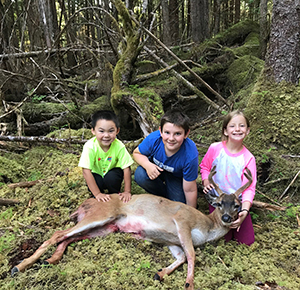
Do you ever feel like your voice, one voice, is just too small to make a difference in this politically charged and popular opinion driven world? I don’t think you’d be alone in saying yes; I know I have felt that way throughout my life. It’s hard to imagine straightforward ways to engage our political and regulatory processes these days enough to affect real impact or change. It’s easy to get down, kick the dirt, and throw up your arms in frustration and dissatisfaction. However, here in Alaska, if you are passionate as I am about fish, wildlife, and the long-term management of your resources, your voice can be heard. We have one of the most open public processes of which few Alaskans are aware. It’s time to roll up your sleeves, dust off that list of observations from the field and ideas for better fishing and hunting regulations concerns, write a regulatory proposal, and engage the Board of Fish (BOF) or the Board of Game (BOG). After all these are YOUR resources!
This is the third of four articles about the management of our shared fish and wildlife resources. You may remember in the first article we provided historical context to the origins of fish and wildlife conservation and management in the United States. In the second, we outlined the current approach to managing and safeguarding our shared fish and wildlife resources, including a discussion on the Public Trust Doctrine (PTD), the role of biologists, and the mechanisms to fund their activities.
Today, we bring it home to Alaska. This article outlines the many ways you as an individual can affect fish and wildlife management and harvest regulation change right here in Alaska. Remember, the Alaska Department of Fish and Game (ADF&G) and its biologists do not set regulations; that’s the sole responsibility of you, the Board of Fish and the Board of Game. ADF&G simply takes its marching orders (so to speak) from the BOF and BOG on your behalf. Before getting too deep in details, it might be beneficial to very quickly review the PTD and how that is implemented in the state of Alaska and subsequently throughout our country.
Public Trust
The PTD is the cornerstone of how fish and wildlife resources are accessed, managed, and safeguarded. The PTD states that all fish, wildlife, and their habitats are held in trust for you and me (the beneficiaries) by each state. In Alaska, the state Legislature is the trustee, and it delegates most of the trustee role to the BOF and BOG, while occasionally passing laws to guide (or constrain) board actions. The Governor (Executive branch) also has a role in appointing board members and cabinet/agency heads, subject to legislative approval. The Executive delegates to the commissioner of ADF&G the role of trust manager. That individual (and his or her staff) is responsible for monitoring the resource and providing biological recommendations to the trustee (BOF and BOG) to safeguard the resource. Biologists simply work on behalf of the trust manager trying to collect the best, most unbiased, scientifically defensible data on each species or population. I’m sure this all makes total sense…right? It’s complex but worth understanding as all of this is performed for you and our collective shared resource across Alaska and every other state. So how does this affect me, you might ask? How do I engage the BOF and BOG you might wonder? Let’s get to it!
The Alaska State Regulatory Process
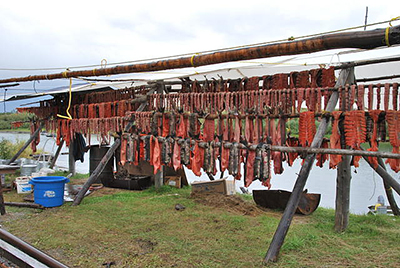
The BOF and BOG are regulatory bodies each composed of seven members appointed by the governor for three-year terms. Yes, the political views of the sitting governor can and do influence who is appointed to vacant seats on each board just like U.S. Supreme Court justices are appointed by the sitting President of the United States. Nonetheless, the BOF and BOG are responsible for allocating the finite resources between user groups (for example, should personal use dipnetters on the Kenai take preference over commercial or sport fishers?...yikes!) and making regulatory change relative to fishing, hunting, and trapping. Board meetings are held in each region of the state every three years for fish (BOF) and wildlife (BOG) related topics.
There are three primary means through which you can clearly and positively affect change in the management of your fish and wildlife resources at the BOF or BOG. First, you can write a regulatory proposal providing an alternative to the current fishing, hunting, or trapping regulations. Each meeting agenda is primarily composed of various regulatory proposals that anyone can draft. If, for example, you have concerns about a fishing regulation that you believe is too restrictive or too liberal, you can write a regulatory proposal outlining how, when, and where you would recommend it could be changed. ADF&G or other agencies may also submit proposals for similar reasons, particularly if there is a biological concern about a declining population or an underutilized resource that could provide more fishing or hunting opportunity.
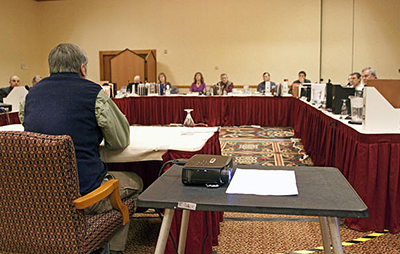
Once a proposal is submitted it becomes the “property” of either the BOF or BOG. A series of proposals is accumulated prior to each regional BOF or BOG meeting. In anticipation of a board meeting, local ADF&G biologists will provide input relative to the biology of the species or population in question on each proposed change. Specifically, they will comment on the ecological impacts and consequences the proposed change may have on that species or population.
Second, you can provide written comment on one or all of the proposals going before a BOF or BOG meeting. Prior to each BOF or BOG annual meeting cycle, a booklet is published listing each proposal to be discussed that year. Anyone can submit written comment in support or opposition of any proposal.
Third, you can provide oral testimony at the BOF or BOG meeting. Each member of the public is allowed three minutes to verbally describe and articulate their support or opposition to one or more proposals. The board members are eager to hear from you and others as these are YOUR resources. This really is the nexus within the PTD: you and the regulatory body that is responsible for your resources. If few people engage these avenues the board members struggle to understand how the beneficiaries want their resources managed…so it’s time to engage. Can you feel your heart pumping? Here is a process that needs your involvement! Time to get off the couch, stop complaining, and get involved at all levels!
Advisory Committees – The Local Voice
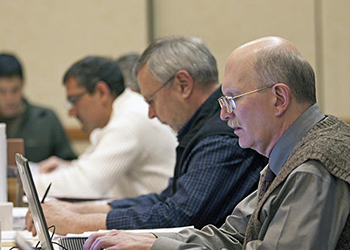
In addition to citizens engaging the BOF and BOG, there are other formally organized bodies that assist the public engagement process. Fish and Game Advisory Committees (ACs) are community-based groups that represent the views of local residents regarding the management of their local fish and wildlife resources and provide those views and recommendations to the boards. There are 84 ACs across Alaska representing the largest community (Anchorage AC) to some of the smallest (e.g. Mount Yenlo AC). Local AC meetings occur one or more times in the year leading up to that ACs regional BOF or BOG meeting. So a fourth way of getting involved is a larger commitment: you can join an AC or at least attend a local AC meeting to provide your views and insights.
Because Alaskans have always been heavily reliant on fish and wildlife resources for sustenance, culture, and spiritual necessity, Article 8 of the Alaska State Constitution provides a priority for the development and use of our fish and wildlife resources on a sustained yield principle subject to the preferences among beneficial users. Yield is a critical word in this statement as it implies use, harvest, and extraction (timber and minerals).
The Necessity of Management
You might be thinking, I don’t hunt or fish, so this process is not for me. Do we really need to manage fish and wildlife populations? However, I would like to challenge you by saying regardless of your views on hunting, fishing, trapping, or simply wildlife viewing these issues and this process are still relevant to you. Even if hunting and fishing did not exist in this country, state fish and wildlife agencies would still be needed and they would still need your support. For example, how do we continue to protect threatened and endangered species across this country from development and urbanization. What about the coastal Alaska communities that depend on commercial fishing? How do we address invasive species that outcompete some of our native species? How do we deal with nuisance bears in our neighborhoods? These are your resources and the trustees (BOF and BOG) need your involvement to address complex issues that do affect you. Your engagement of this process further strengthens the PTD and allows the trustees to understand what you and the other beneficiaries desire for outcomes.
Other Means to Engage Change
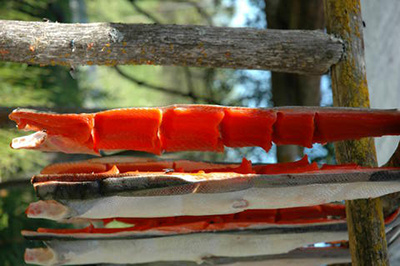
In addition to the state administered BOF and BOG there are other processes (state and federal) that one can engage with regard to fish, wildlife, and our natural environments in Alaska. For example, the Department of Forestry, has a process nearly opposite of the BOF or BOG. Regulations and policy changes are proposed and then receive public comment to address the publics concerns. On the federal side, the Federal Subsistence Board is the federal body that regulates subsistence regulations on federal lands that compose 60% of Alaska. Much like the BOF and BOG, the federal structure has local input through Regional Advisory Councils that address regulatory proposals and, like the state ACs, are designed to speak for a community or collection of communities.
Openness Adds Complexity
The state BOF and BOG process could arguably be one of the most open public processes in Alaska; however, that process can lead to complex regulations that can be confusing to understand. Anyone can submit a proposal about any change they desire. Often the BOF and BOG try very hard to minimize complexity and confusion but often many of the proposals do pass and become regulation. When you stack up 50-60 years of fishing, hunting, and trapping regulatory change that was focused on small localized areas, specific fish or wildlife populations, or specific user groups, regulations can become very complicated, nuanced, and confusing. As much as possible the boards try to reduce regulatory complexity and confusion; however, because of the nature of the very open BOF and BOG, it can be difficult to streamline regulations and can even cause people to stop participating in fishing and hunting.
Fewer Hunters and Anglers
There are a wide variety of reasons that folks choose to avoid or stop participating in fishing, hunting, and trapping. Nationally and in Alaska, this trend has been increasing. As a result, this means fewer license sales, fewer federal PR and DJ funds to match, lower participation rates in the regulatory process, and ultimately fewer people that engage the PTD and the management of our shared resources. One big reason is that as hunters reach their mid-sixties, they tend to stop hunting - they “age-out” of the activity.

In addition, it is becoming increasingly common for fewer and fewer state fish and wildlife agency staff to buy fishing and hunting licenses, engage their own states regulatory process, or frankly even understand the PTD and its value on delineating our shared resources. In general, fewer young people are buying licenses or purchasing firearms, fishing rods, and reels. In part, that’s because in many areas of the Lower 48, there are fewer places available to hunt and fish. But many people still enjoy the outdoors, and are participating in wildlife viewing, bird watching, photography, and hiking. These activities are not currently designed to provide financial feedback to fish and wildlife management, as license sales and PR and DJ funds have, to support the resources these folks are enjoying.
What does this mean for our fish and wildlife resources in terms of funding management, research, monitoring, and education? What does this mean for the long-term health of our fish and wildlife in this country? How should the state agencies, tasked with safeguarding these resources, fund and manage against habitat destruction, overharvest, disease monitoring, and predation for the benefit of the increasing non-consumptive users? These are the topics that will be explored in more detail in the final article of this series.
Until then, make a pledge (and bring a friend) to engage, at any level, the management of your fish and wildlife resources. Attend a local AC or BOF meeting, stop complaining and submit a proposal, and buy a fishing, hunting, or trapping license. Make your voice heard!
More about the Board of Game
More about the Board of Fisheries
Subscribe to be notified about new issues
Receive a monthly notice about new issues and articles.
